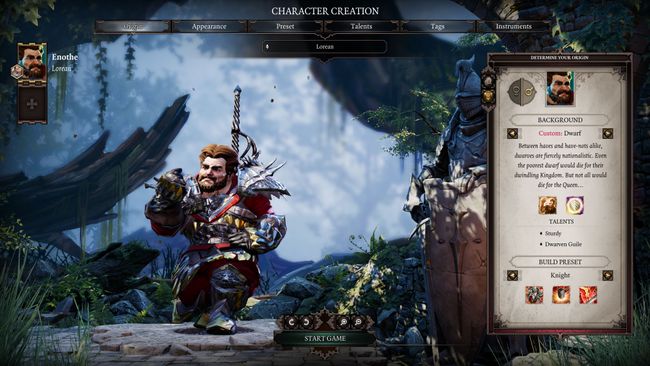

There are better damage-dealing classes (which is ostensibly the purpose of giving the Metamorph points into Two-Handed) that can provide more value in roles like Tank and Support. They also have access to more Polymorph abilities that increase the aforementioned fun factor.įunctionality, however, proves to be something of a stumbling block. The Metamorph, on the other hand, has more straightforward mechanics that are useful in the early game. Beyond that, the uses are largely situational. Since many early fights feature enemy AOE, an early point investment into this particular skill can be quickly invalidated unless you’re anticipating the fight and have adequate time to prepare. This is the crucial difference between the two - Chameleon Cloak can be tricky to use for beginners. Now, don’t get me wrong - the Shadowblade is a fun and interesting class on its own, but the Metamorph ultimately wins out when it comes to the early game.īoth classes have access to Chicken Form (a transformation spell my friend and I referred to as “the Chickening” during our co-op campaign), but the Shadowblade takes on Chameleon Cloak as its other Polymorph ability. Its merits are perhaps best contrasted to the Shadowblade, the only other class with early access to the eternally-amusing (and often quite useful) Polymorph skill. All of this makes the Metamorph a blast to play, especially in the early game. Outside of combat, you get a point in Persuasion that allows for fun dialogue options in certain cases. Abilities like Bull Horns and Tentacle Lash give you both mobility and the opportunity to impose debilitating status effects on foes. While the novelty wears off eventually, it’s still hard not to smile every time some eldritch monstrosity gets unceremoniously turned into a chicken. Metamorphįirst in our Divinity: Original Sin 2 classes guide is the Metamorph.įun is where the Metamorph succeeds the most. Starting at number five, let’s work our way through the Divinity: Original Sin II best classes 5. With our established standards in mind, let’s jump into our list! The 5 Best Classes in Divinity: Original Sin II The Divinity: Original Sin 2 best starting classes will excel in all three of these categories, and we’ve tested each of the classes in DOS2 to evaluate their performance. Survivability is vital if you’re going to make it off Fort Joy, and some classes are a little hard to handle unless you have the right party composition - well-rounded choices or those that play well with others will be your best bet. Lastly, how useful is the class? The best classes will fill a solidly-defined role in the party and have a diverse set of skills that provide variability and tactical advantages in combat. The more fun a class is, the more likely you are to continue playing once the novelty has worn off.

Secondly (and a bit more nebulously), is the class fun to play? This is more a matter of personal taste, but we’re generally referring to whether or not the class has potential for exciting combos, flashy (or even funny) combat abilities, and engaging moment-to-moment play. More experienced players may choose to customize their starting kit if they have a specific endgame build in mind, but beginners are better off choosing a template to start with. Since you can alter your character as you play, it’s important to start with a strong foundation that can be built on as you level up. 2 The 5 Best Classes in Divinity: Original Sin IIįirstly, you should consider how each class begins the game and whether its starting kit is a good fit for early encounters.


 0 kommentar(er)
0 kommentar(er)
